Reviving The Traditional Trade Culture Of Khatunganj, Chattogram
The project to revitalize Khatunganj, one of Bangladesh’s most historically significant and largest wholesale markets, aims to preserve its rich heritage while adapting to contemporary needs. Located along the Karnaphuli River and Chaktai Canal, Khatunganj has been a crucial trade hub since the 2nd century, attracting global traders such as Arabs, Turks, Portuguese, Dutch, and French. It played a vital role in Bangladesh’s economic history, significantly contributing to the world’s GDP during the Mughal era and remaining an essential economic center post-independence.
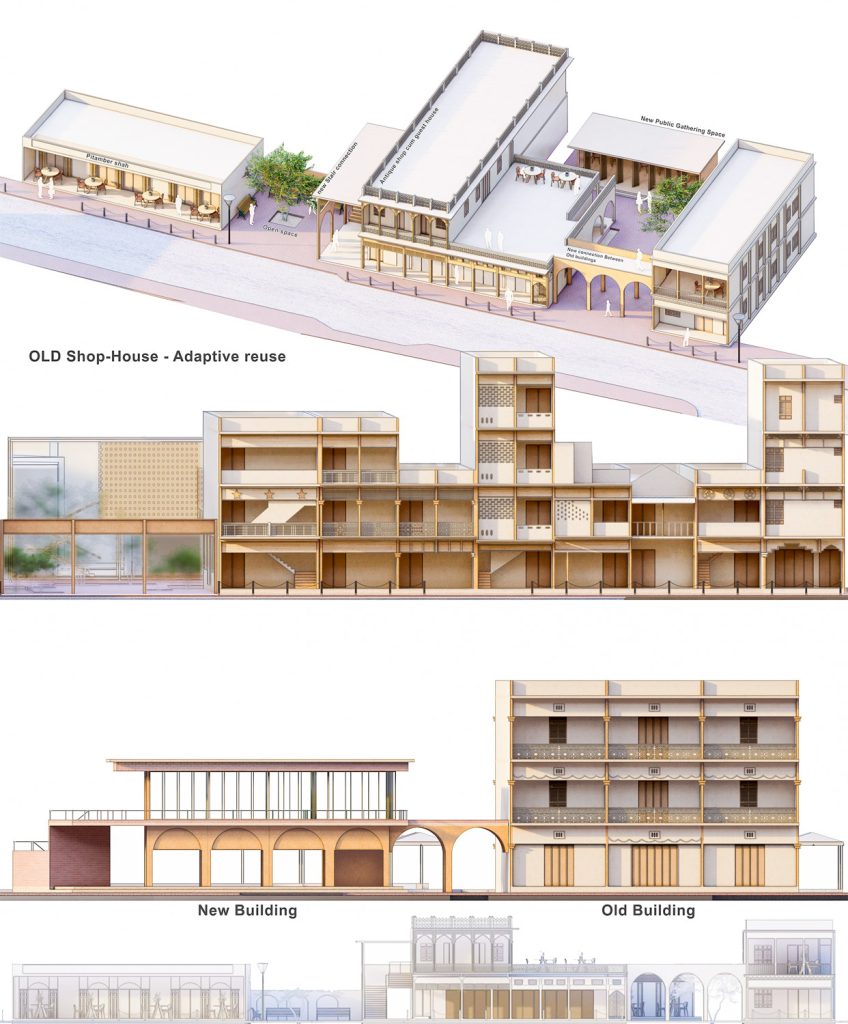
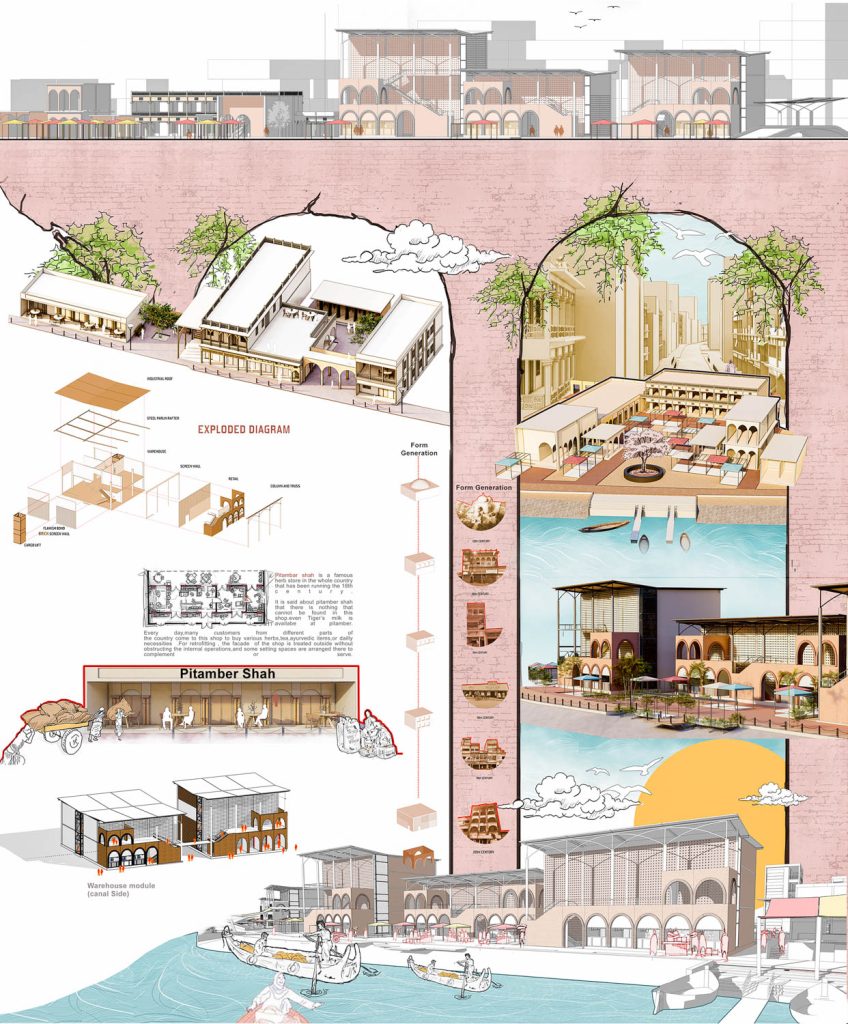
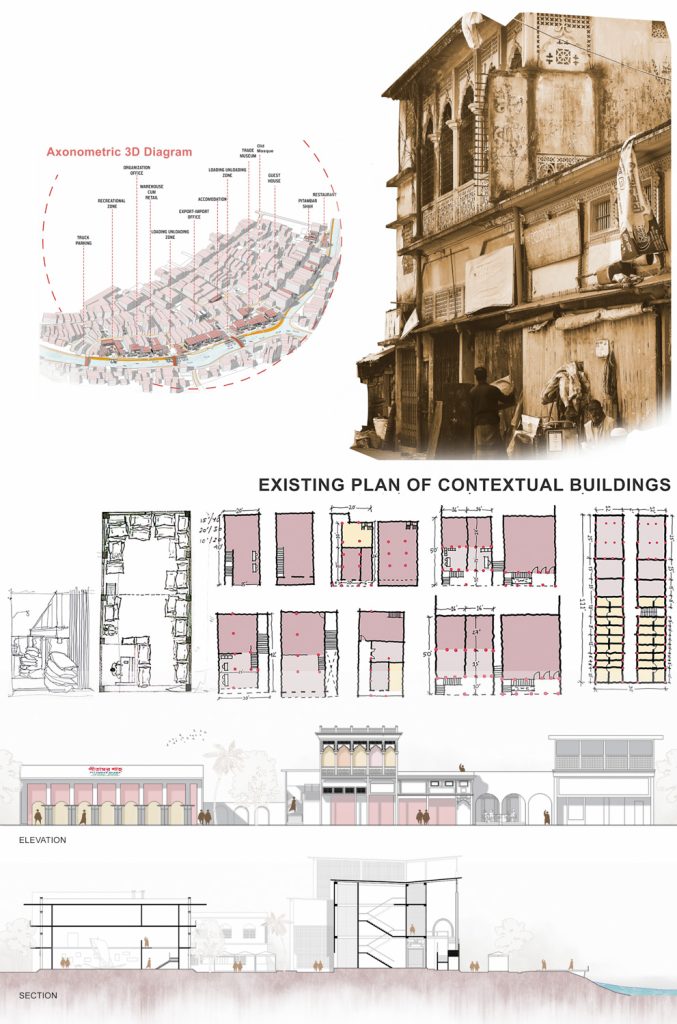
However, Khatunganj faces challenges like traffic congestion, waterlogging, and the deterioration of historic buildings. This project addresses these issues with innovative solutions that blend tradition and modernity. The revitalization plan includes the adaptive reuse of historic structures, preserving architectural heritage while accommodating current business needs.
Modular warehouse designs, combined with traditional architectural elements, aim to maintain the area’s historical charm.
To enhance functionality and accessibility, the project proposes converting narrow streets into pedestrian zones, creating designated loading/unloading areas, and restoring canals for efficient water transport and recreational boating. Sustainable practices, such as flood management
strategies and promoting tourism through adaptive reuse, are central to the project’s vision, ensuring long-term environmental and economic viability.
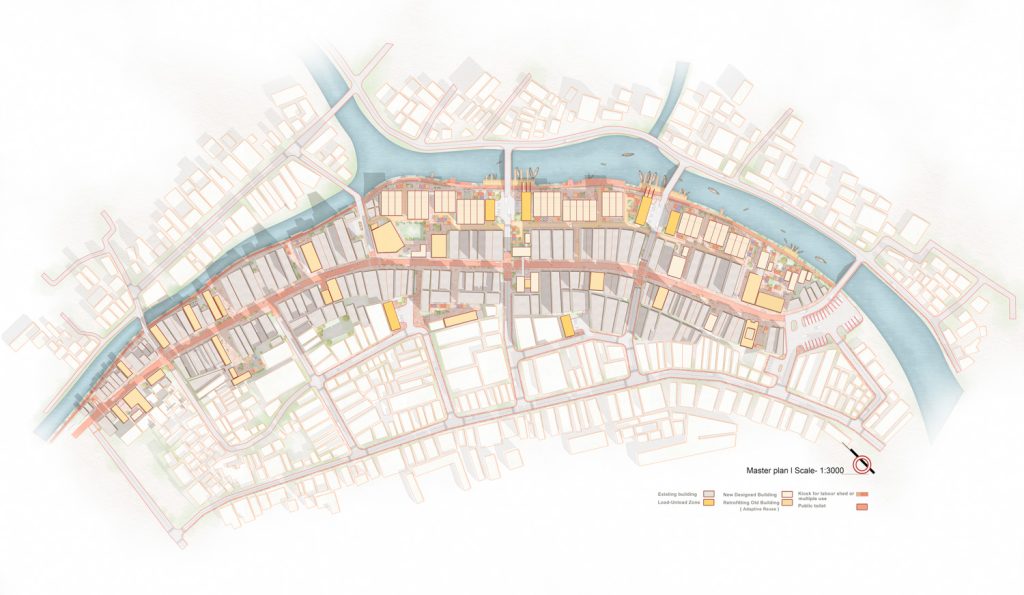
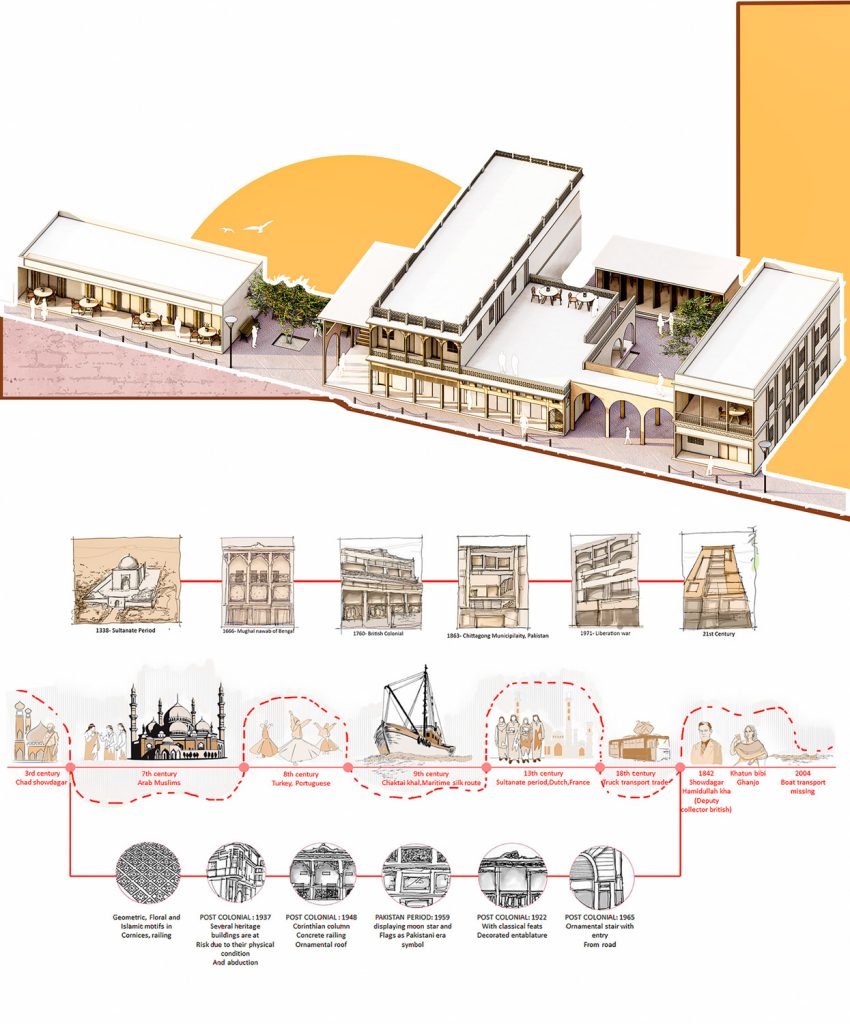

This approach not only preserves Khatunganj’s historical and cultural significance but also
reinforces its role as a vibrant market for future generations. The project exemplifies a holistic urban revitalization method, balancing historical preservation with modern commerce and community life demands.
